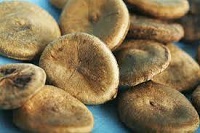Need of standardization of herbal medicines in Modern era
Keywords:
standardization, medicines, Modern eraAbstract
The medicinal plants are important source for pharmaceutical manufacturing. Medicinal plants & herbal medicines account for a significant percentage of the pharmaceutical market. As the side effects of Synthetic medicine have started getting more apparent, majority of formulation are prepared from herbs. The herbal medicines however, suffer from lack of standardization parameters. The main limitation is the lack of standardization of raw materials, of processing methods and of the final products, dosage formulation, and the non existence of criteria for quality control. It is necessary to introduce measures on the regulation of herbal medicines to ensure quality, safety, efficacy of herbal medicines by using modern techniques, applying suitable standards & GMP.
References
. Muthamizhe SK, Prakash YG. Gopal V.Standardization of traditional medicine - Need and urgency. Inter.J. of Phytotherapy. 2013;3(1):5-10.
. Badjugar SB, Patil MB. Ethnomedicines for Jaundice used in tribal areas of North Maharashtra. Natural Product Radiance. 2008; 7(1): 79-81.
. Bauer R. Quality criteria and standardization of phytopharmaceuticals: Can acceptable drug standard can be achieved. Journal of Drug Information. 1998; 32:101-110.
. Vaidya ADB. Devasagayam TPA. Current status of herbal drugs in India: An overview. J Clin Biochem. 2007; 41(1):1– 11.
. EMEA. Guidelines on Quality of Herbal Medicinal Products/Traditional Medicinal Products. EMEA/CVMP/814OO Review. European Agency for the Evaluation of Medicinal Products (EMEA) London. 2005.
. WHO.General Guidelines for Methodologies on Research and Evaluation of Traditional Medicine. World Health Organization, Geneva. 2002c.
. EMEA.Quality of Herbal Medicinal Products Guidelines.European Agency for the Evaluation of Medicinal Products (EMEA), London. 1998.
. Wani MS. Herbal medicine and its standardization. Pharma. info. 2007; 1,6.
. Archana a, anubha k. Standardization of herbal drugs : an overview. International research journal of pharmacy.2011; 12(2),56-60.
. WHO. Quality Assurance of Pharmaceuticals: A Compendum of Guidelines and Related Materials, Good Manufacturing Practices and Inspection. World Health Organization, Geneva. 1996a, 2.
. WHO. Guidelines for the Assessment of Herbal Medicines. WHO Technical Report Series, World Health Organization, Geneva. 1996b; 863.
. WHO. Quality Control Methods for Medicinal Plant Materials. World Health Organization, Geneva. 1992.
. Neeraj C, Bhupinder SS. An overview of advances in the standardization of herbal drugs. J Pharm Educ Res. 2011; 2(2): 61-62.
. Rajini M, Kanaki NS. Phytochemical.Standardization of herbal drugs and polyherbal formulations. Bioactive Molecules and Medicinal Plants. 2008; 349-369.
. Mosihuzzaman M, Choudary MI. Protocols on safety, efficacy, standardization and documentation of herbal medicine. Pure Applied Chemistry.2008; 80(10): 2195-2230.
. Hylands P. New approaches for the quality control and standardization of plant delivered pharmaceutical and nutraceutical products. Oxford: Oxford Natural Products Publications. 2002.
. WHO. Quality Control Methods for Medicinal Plant Materials. World Health Organisation, Geneva.1992.
. WHO. The International Pharmacopeia, Vol.3: Quality Specifications for Pharmaceutical Substances, Excipients, and Dosage forms, 3rd edn. World Health organization Geneva. 1988.
. De Smet. PAGM. Drug Information Journal. 1999; 33: 717-724.
. WHO. Guidelines for the appropriate use of Herbal Medicines. WHO Regional publications, Western pacific series No 3, WHO Regional office for the Western Pacific, Manila. 1998.
. WHO. Guidelines for the Assessment of Herbal Medicines. WHO Technical Report Series, No863. World Health Organization, Geneva. 1996.
. Sachan AK, Sachan N K, Kumar S, Sachan A, Gangwar SS. Evaluation and Standardization of Essential Oils for Development of Alternative Dosage Forms. European Journal of Scientific Research. 2010 ; 46(2): 194 – 203.
. Sachan AK and Kumar A. Stability testing of herbal products. Journal of Chemical and Pharmaceutical Research. 2015; 7(12):511-514 .
. ICDRA. 6th International Conference on Drug Regulatory Authorities.World Health Organization. 1991.
. TDR. Operational Guidance: Information Needed to Support Clinical Trials of Herbal Products.UNICEF/ UNDP/ WORLD Bank/WHO special program for Research and Training in Tropical Diseases (TDR). 2005.
. Barnes J, Anderson LA, Phillipson JD. Herbal medicine. 3rd Edition, Pharmaceutical Press, London.2007; 1-23.
. AOAC. Official Methods of Analysis of AOAC International, 18th edn. AOAC International, Gaithersburg, MD.2005.
. De Smet PAGM, Keller K, Hansel R, Chandler RF. Aristolochia species In: Adverse Effects of Herbal Drugs.Springer-Verlag, Heidelberg. 1992; 1.
. De Smet PAGM, Keller K, Hansel R., Chandler RF. Adverse Effects of Herbal Drugs.Springer-Verlag, Heidelberg. 1997; 3: 137-145.
. Watson DG. Pharmaceutical Analysis. Churchill Livingstone, Edinburgh.1999.



